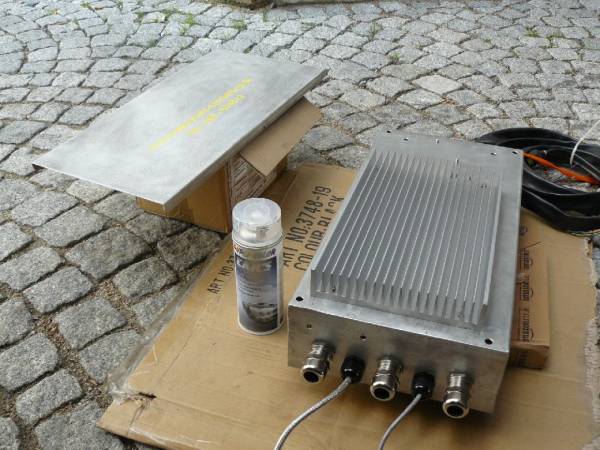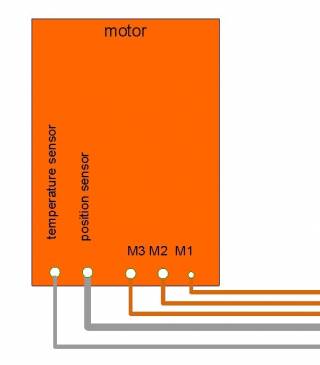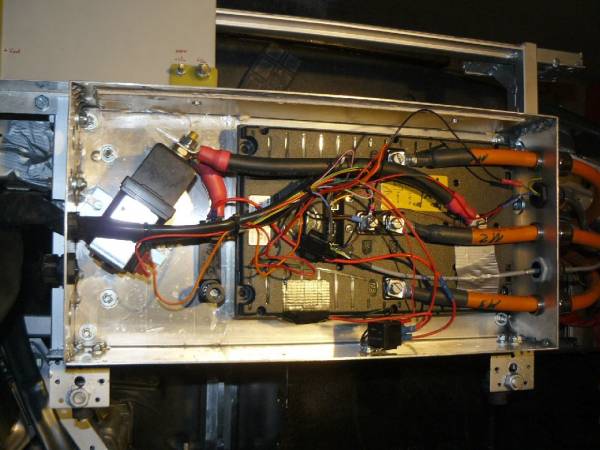User Tools
Sidebar
This is an old revision of the document!
Table of Contents
motor controller
motor controller box
The motor controller is built into an aluminimum box that came already pre-wired and tested by Marco Lorey. It is mounted into the controller_frame, so that the controller's heat sink is well ventilated.
Below, for orientation only, a clipping of the wiring diagram. It will not indicate the peers of all connections, and it may be outdated. Please refer to wiring_diagram for a comprehensive and uptodate view.
The large black box is the motor controller itself. Supply from the traction battery is switched via a small relay that drives the large contactor. The three orange 50mm² gauge wires connect to the motor.
Between contactor and controller, there is an ANL type fuse holder that holds the main fuse (equipped only on the second photo).
The controller connects to the accelerator potentiometer (described in the next section) and to rotation and temperature sensors in the motor.
A couple of additional control wires go from the motor controller box to the 12V distribution box. Since some of the wires are on traction grid potential, they require decoupling by relays - as e.g. the immobilizer relay or the solid state relay that conveys the signal from the brake pedal switch.
motor controller setup
The motor controller can be configured via an external hand-held device. This device allows to modify a set of parameters, that widely determine the controller's characteristics.
At low RPMs, the secondary current (i.e. the current between controller and motor) becomes very high even at low primary (traction battery) current. If the controller settings are not carefully optimized, the controller tends to either go into “current limiting” mode and reduce the power, or to unexpectedly switch off completely.
The controller manufacturer finally provided a configuration “optimized for performance” that makes the motor deliver a lot of torque from 0 rpm on (like the datasheet would suggest anyhow) and avoids shutdowns.
Besides these parameters that control the motor characteristics itself, there is a couple more settings e.g. for setting the characteristics of regenerative braking.
Three different kinds of “braking” can be distinguished: “directional brake” avoids that the motor starts to spin backwards if stopping on a slope “neutral brake” provides braking when the accelerator pedal is released “foot brake” provides additional braking when the brake pedal is pressed.






